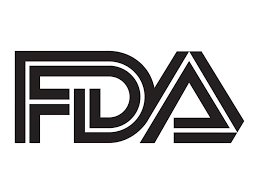Article
FDA Approves Evinacumab for HoFH in Children Aged 5-11 Years Old
Author(s):
The US FDA has approved an indication for evinacumab for use as an adjunct to other lipid-lowering therapies in children with homozygous familial hypercholesterolemia as young as 5 years old, which makes evinacumab the first ANGPTL3 inhibitor indicted for this patient population.
Courtesy: US Food and Drug Administration

The US Food and Drug Administration has approved evinacumab-dgnb (Evkeeza) for use in children aged 5-11 years old with homozygous familial hypercholesterolemia (HoFH).1
Announced on March 22, the approval, which indicates the agent for use an adjunct to other lipid-lowering therapies, is the first angiopoietin-like 3 (ANGPTL3) inhibitor treatment indicated for children as young as 5 years old to lowering elevated low-density lipoprotein cholesterol (LDL-C) caused by HoFH.1
“At the Family Heart Foundation, we know that children with homozygous familial hypercholesterolemia, and those caring for them, often live in fear of what the future holds as they contend with the dangerously high levels of bad cholesterol, or LDL-C, caused by this genetic disorder,” said Mary McGowan, MD, Chief Medical Officer of the Family Heart Foundation.1 “Only 5% of rare diseases actually have an FDA-approved treatment. With this FDA approval, the HoFH community now has a much-needed treatment for young children, potentially making it possible for many to achieve recommended LDL-C levels much earlier in the course of this rare disease. This is a hopeful development for those living with HoFH.”
Approved by the FDA for use as an adjunct to other LDL-C-lowering therapies for people aged 12 years and older with HoFH in February 2021, the ANGPTL3 inhibitor’s initial approval was based on the results of the phase 3 ELIPSE HoFH trial.2 A 24-week, 65-patient trial, results of the study indicated use of evinacumab was associated with a 49% reduction in LDL-C from baseline relative to placebo therapy (P <.0001). Further analysis of the trial indicated use was also associated with significant reductions in levels of apolipoprotein B, non-high-density lipoprotein cholesterol, and total cholesterol, compared to placebo (P <.0001 for all).2
In their announcement of the HoFH indication in those aged 5-11 years, Regeneron called attention to a pivotal 3-part, single-arm trial conducted in this age group. Part A of the trial was a phase 1b trial conducted among 6 individual to determine the pharmacokinetics, safety, and tolerability of evinacumab.1 Part B, which assessed the effect of evinacumab use over a 24-week period among 14 patients, found use was associated with a mean reduction in LDL-C of 48% and 79% of participants reduced LDL-C by at least half at 24 weeks.3 Part C of the trial is an ongoing phase 3 extension trial. In their release, Regeneron pointed out Parts A, B, and C were not designed to determine the effect of evinacumab use on cardiovascular events.1
Among the 20 patients included Part A and B, the observed safety profile was consistent with previous data in adults and pediatric patients aged 12 years and older. Adverse events occurring among more than 15% of patients were COVID-19 (n=15), pyrexia (n=5), headache (n=4), oropharyngeal pain (n=4) as well as upper abdominal pain, diarrhea, vomiting, fatigue, nasopharyngitis, rhinitis and cough (n=3). None of the adverse events led to study discontinuation.1
“Guidelines recommend screening all children at high risk for homozygous familial hypercholesterolemia starting at age 2. However, until now, a positive diagnosis was often met with the frustration of having limited treatment options to help these children,” said Carissa M. Baker-Smith, MD, MPH, codirector of Nemours Cardiac Center Cardiovascular Research and Innovation Program, director of Nemours Cardiac Center Pediatric Preventive Cardiology, pediatric cardiologist, and a trial investigator.1 “By adding Evkeeza to standard lipid-lowering therapies in this pivotal trial, children were able to reduce their LDL-C, with the vast majority able to achieve declines of nearly 50%. These are clinically meaningful results that physicians should consider when developing a treatment approach for these young patients.”
References
- FDA approves first-in-class Evkeeza® (evinacumab-dgnb) for young children with ultra-rare form of high cholesterol. Regeneron Pharmaceuticals Inc. https://investor.regeneron.com/news-releases/news-release-details/fda-approves-first-class-evkeezar-evinacumab-dgnb-young-children. Published March 22, 2023. Accessed March 22, 2023.
- FDA approves first-in-class Evkeeza™ (evinacumab-dgnb) for patients with ultra-rare inherited form of high cholesterol. Regeneron Pharmaceuticals Inc. https://investor.regeneron.com/news-releases/news-release-details/fda-approves-first-class-evkeezatm-evinacumab-dgnb-patients/. Published February 11, 2021. Accessed March 22, 2023.
- Evkeeza® (evinacumab) phase 3 trial demonstrates 48% LDL-C reduction in children with ultra-rare form of high cholesterol. Regeneron Pharmaceuticals Inc. https://investor.regeneron.com/news-releases/news-release-details/evkeezar-evinacumab-phase-3-trial-demonstrates-48-ldl-c. Published May 21, 2021. Accessed March 22, 2023.





